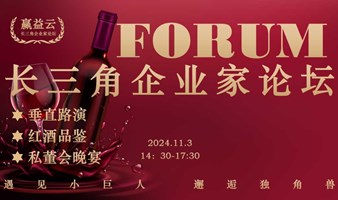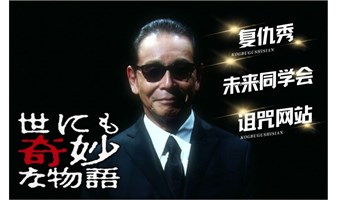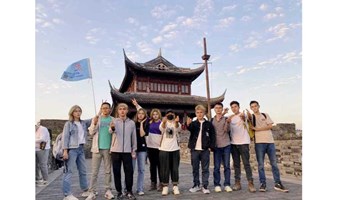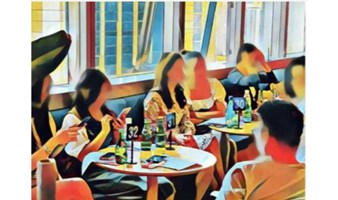

行摄苏河北岸,百年时光变迁!都市徒步Suzhou Creek Meetup Citywalk.
收起
活动内容收起
昼夜轮回着的光, Day and night, light comes and goes
苏州河温润在它历史的澄明之中 Suzhou Creek, warm and misty, lays In s historical
人间烟火漫过了一个世纪的钟声 The earthly fireworks have accompanied the bells for a century
流水之中日月的颂词缓和又涤荡 The hymn to sun and
抬起头会看到渔船和飞马 Looking up you will see fishing boats and flying birds
还有流水打开的人间抒情 And the lyrical feelings of the water
Historic Suzhou Creek Walk. Shanghai was built on the water and prospered by the water. As the city's mother river, Suzhou Creek has witnessed the prosperity, decline, and revival of Shanghai
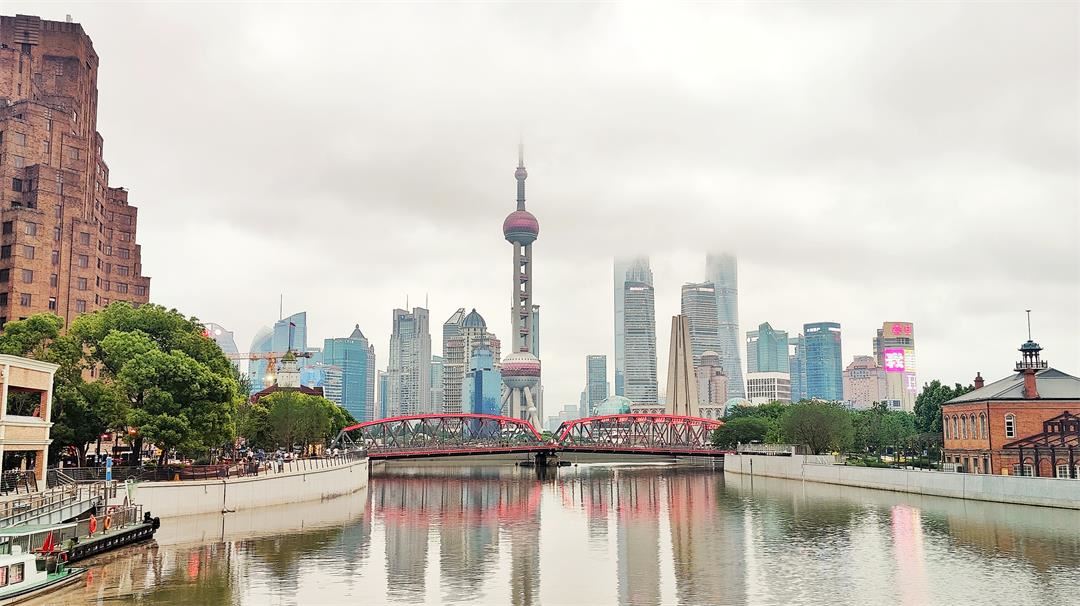
City Walk是一种沉浸式体验,用脚步丈量城市,探寻城市记忆,触摸历史,感受文化。城市徒步概念最早来自英国伦敦,有人叫它城市探索,也有人叫它城市漫游。城市徒步活动(City Walk)的兴起源于Travel as a local(像当地人一样地旅行)理念的盛行,通过徒步这一种活动方式,能够帮助参与者重新理解城市的空间与建筑,用行走来品味城市特色和文化,沿着城市记忆的足迹,探寻城市记忆的故事,关注当地的人文和生活方式,鲜活地感受到一座城市的生命。City walk路线原则上避开喧闹的旅游景点,用脚步去丈量城市,帮助我们重新理解城市的空间和格局。让旅行在城市中延伸。

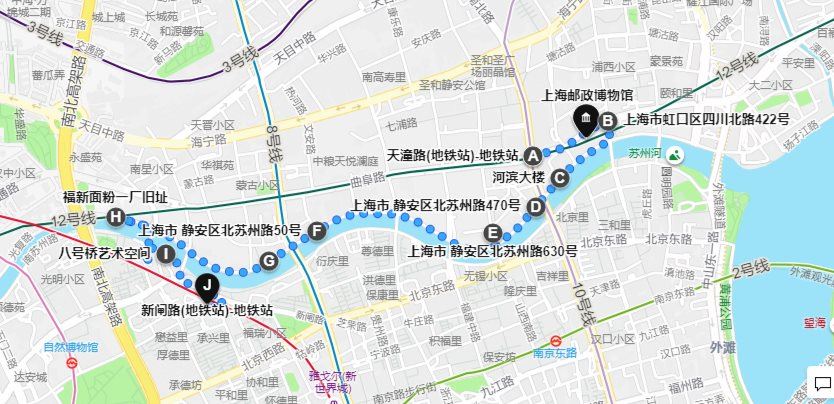
集合时间:7月3日(周六)报名后领队通知
集合地点:报名后领队通知
人数上限:15人
报名费用:免费
领队微信:hawk_cn
行程速览: 行程约5公里,需要3小时 总线路: --上海邮政博物馆--百老汇大厦(上海大厦)--礼查饭店--俄罗斯驻上海总领事馆---OCAT上海馆--河滨大楼--上海总商会旧址---四行仓库纪念馆--福新面粉厂旧址--八号桥艺术空间--福新面粉厂旧址--新闸路地铁
报名后请添加领队微信获得最新活动安排
This meetup will feature walking tours along Suzhou Creek from Garden bridge on the North Bund to the Bridge 8 art space in Jingan.
Roughly km walking of 3 hours.
Meeting time: 3 JUL 2021,to be noted by Tour leader after RSVP
Meeting point: to be noted by Tour leader after RSVP
Cost: free to participate;
Tour leader wechat ID: hawk_cn
Social distancing and masks required.
Limited to 15 participants.
Finish point at: Xinzha Road station, Metro line 1
Highlight of the walking: No. 8 Bridge Art Space (1908 Granary)- Former Site of the First Foh Sing Flour Mill- UV Working- Shanghi Sihang Warehouse Battle Memorial--The Embankment Building-- Xintai warehouse- Bailian Fashion Center Yanqingli- OACT- Former Shanghai Chamber of Commerce—Shanghai Post Museum—Broadway Mansion—Richard Hotel- Astor House--Garden bridge-
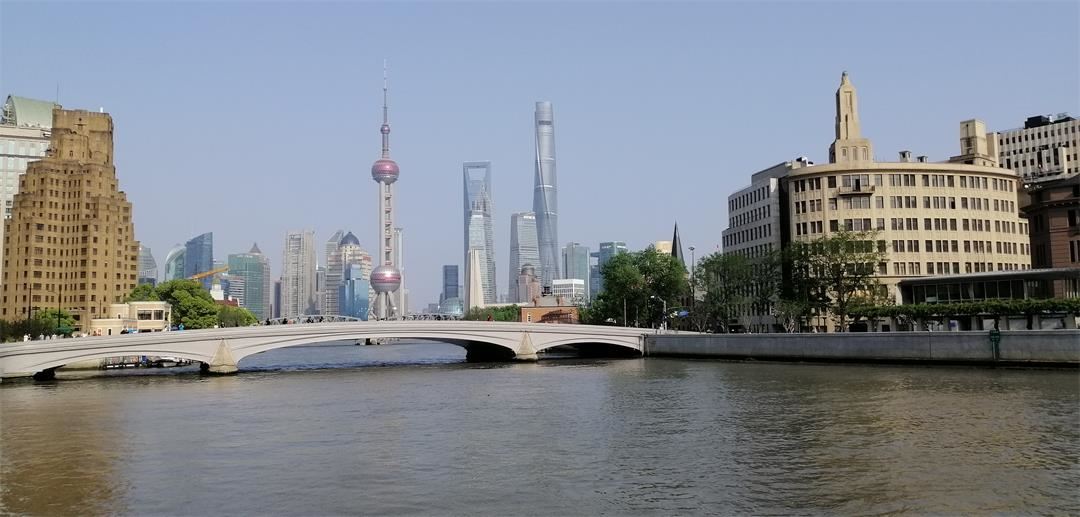
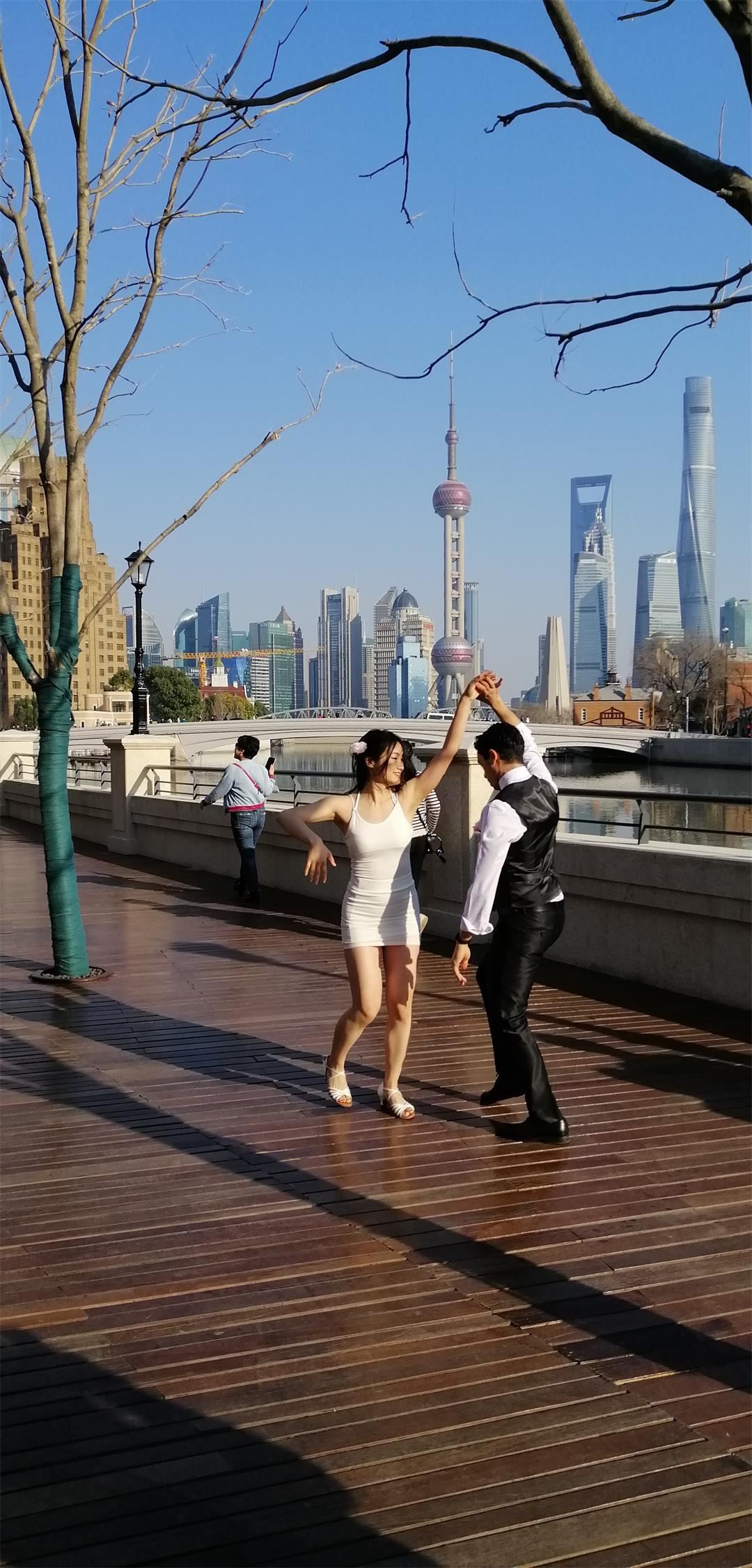
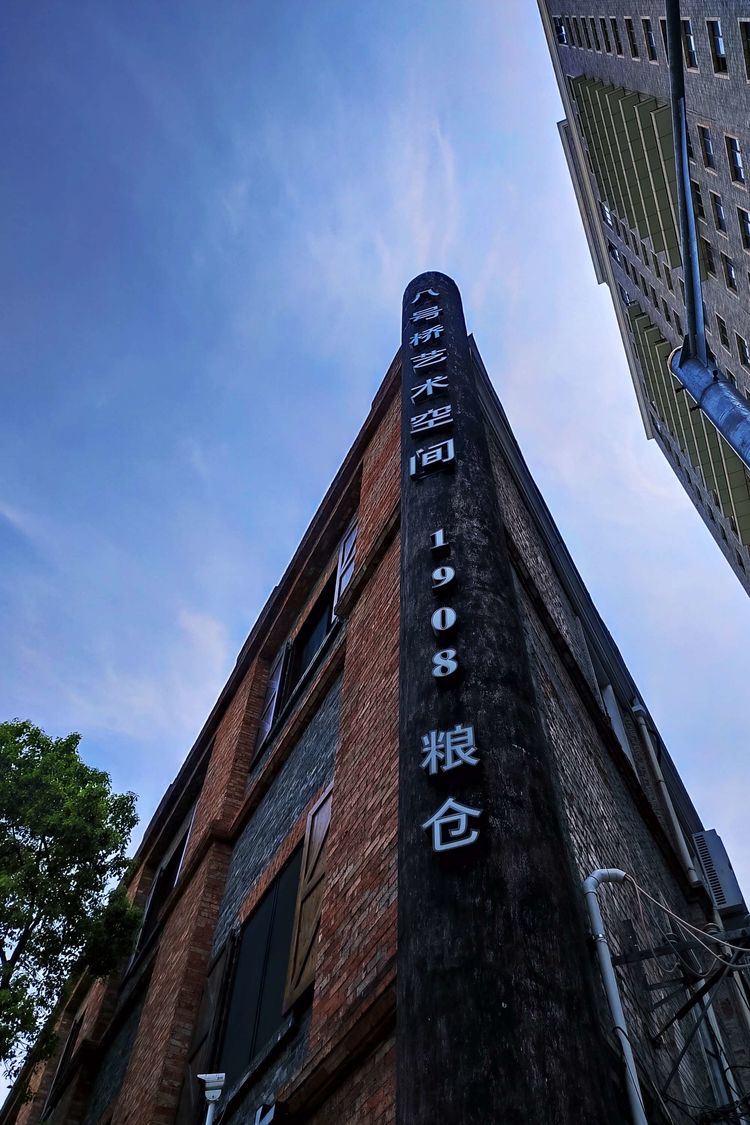
中国通商银行第二仓库旧址,砖木结构始建于1908年。1935年6月,上海大亨杜月笙被推选为中国通商银行董事长兼总经理,后作为其私家粮仓。中国通商银行由中国实业之父盛宣怀于1897年5月27日创办,是中国人创办的第一家华资银行。八号桥艺术空间始建于1908年,原为“中国通商银行第二仓库”,后为民国大亨杜月笙的私家仓库,历经百余年而屹立。在这个历史建筑里,我们聚焦生活美学,举办展览展示、文化交流、艺术活动、影视摄制、话剧演出、时尚发布等等。这里不再有上海旧梦,有的却是苏州河畔的人文新篇章,阅读建筑,品位艺术,感受上海的城市温度。
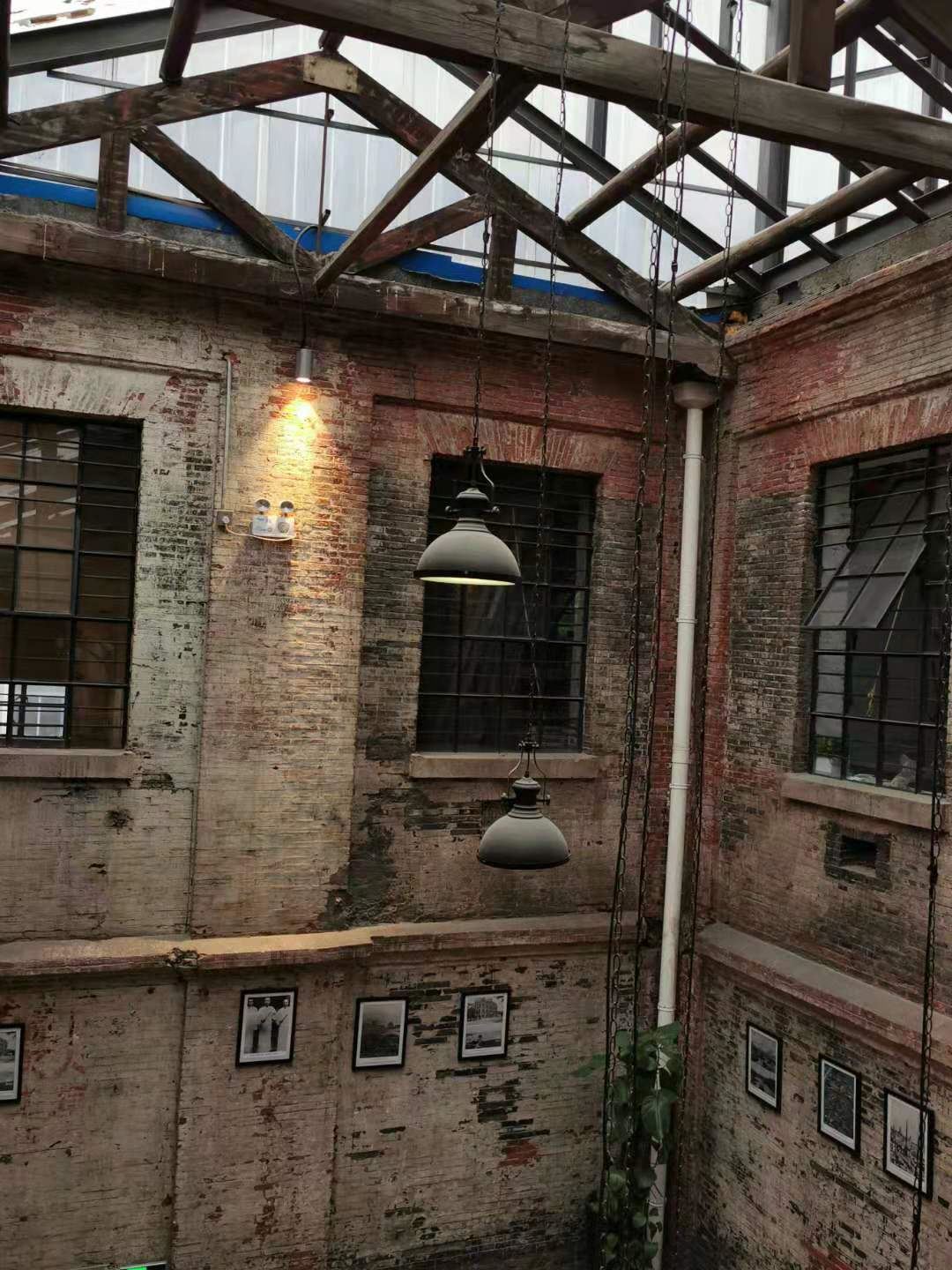
The 1908 Granary — Du Yuesheng’s private granary in the 1930s
About five minutes from Jiu Zi Park, along Suzhou Creek, we found a historic wood-brick structure on the south bank. It was a famous warehouse 100 years ago, formerly the Imperial Bank of China’s second store house, which was built in 1908. In June 1936, Du Yuesheng, then a rogue tycoon of Shanghai, was elected president and general manager of the bank and the building became his private granary. Today the building still keeps its original look and only 48 days were taken to complete the renovation project. The wooden beams, cement layers, transom window and words of warning on the wall still remain. Walking on the steps, old photos on the wall display Suzhou Creek and the granary’s golden era — cargo jams on the creek, Du Yuesheng and his friends, the foreign soldiers on the bridge, and the old picture of the building. Now the building is a venue for exhibitions, and the latest one is a graffiti-art exhibit “Dialogue with the Stars,” telling a story of an astronaut teenager and the stars. By the way, we met lots of Shanghai aunties wearing qipao there, and they were glad to take photos with all the visitors.
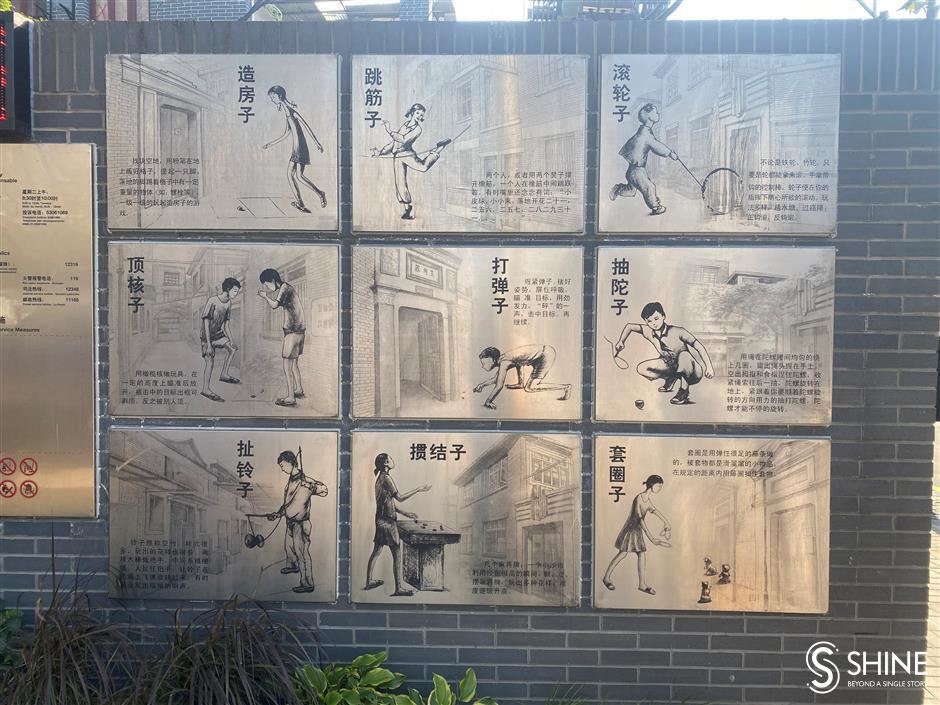
九子公园位于苏州河畔,园内设置了二十世纪五、六十年带上海老式弄堂民间传统九子健身游戏项目,掼结子、抽陀子、跳筋子、滚轮子、打弹子、套圈子、顶核子、扯铃子、造房子等9种民俗游戏,均以铸铜、花岗岩、彩钢板、彩钢管材料制作的雕塑体现,最高有2.5米。在公园外墙还悬挂9幅不锈钢丝网画《弄堂里的记忆》,栩栩如生地记录了上海的地缘文化风情。
Jiu Zi Park
Our exploration started at Jiu Zi Park, on the border between Jing’an and Huangpu districts. It used to be two paper mills before 1949, but was turned into a park in 2006 as part of a Suzhou Creek renovation project.
The park has been renewed with a beautiful waterfront and a small bamboo forest. Red maple trees have been planted to add a splash of color to the creek.
The name of the park came from the “nine games” that used to be played in Shanghai longtang (alleyways) of the shikumen (stone-gate) houses in the 1960s, which brings back golden memories for the city’s elder generation. Boys rolling iron hoops, girls kicking shuttlecocks or playing marbles, the nine sculptures, made of bronze, steel and granite, are a reminder of these old games. For the young generation the old games may be far from our daily life, but they are still interesting.
Every autumn, there will be a Jiu Zi competition in the park, welcoming people to take part in the nine games
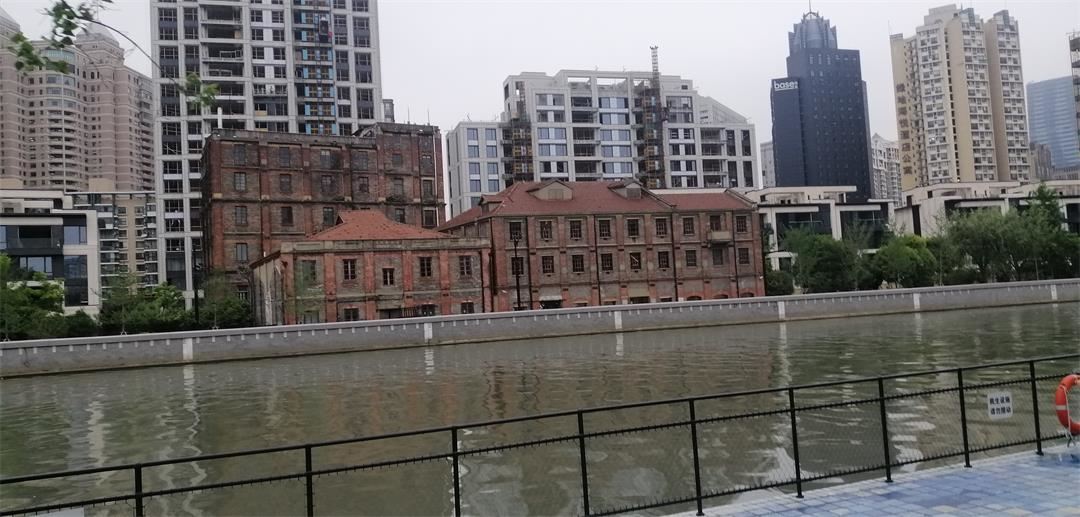
Former Site of the First Foh Sing Flour Mill
Foo 'Sing Flour Mils, Designed by Atkinson.& Dallas, Civil Engineers and Architects, Built in 1912. Masonry
Structure.
福新面粉厂是我国民族资本代表人物、“面粉大王”荣宗敬和荣德生创办的近代上海最大的私营机器面粉厂。现该厂建筑由一幢厂房、一所堆栈组成,建于1912年,建筑面积约4300余平方米,由通和洋行设计,砖木结构,清水红砖外墙,内部分别采用砖柱、木梁、木柱和楼面木板承重;2005年10月,被列为上海市优秀历史建筑。
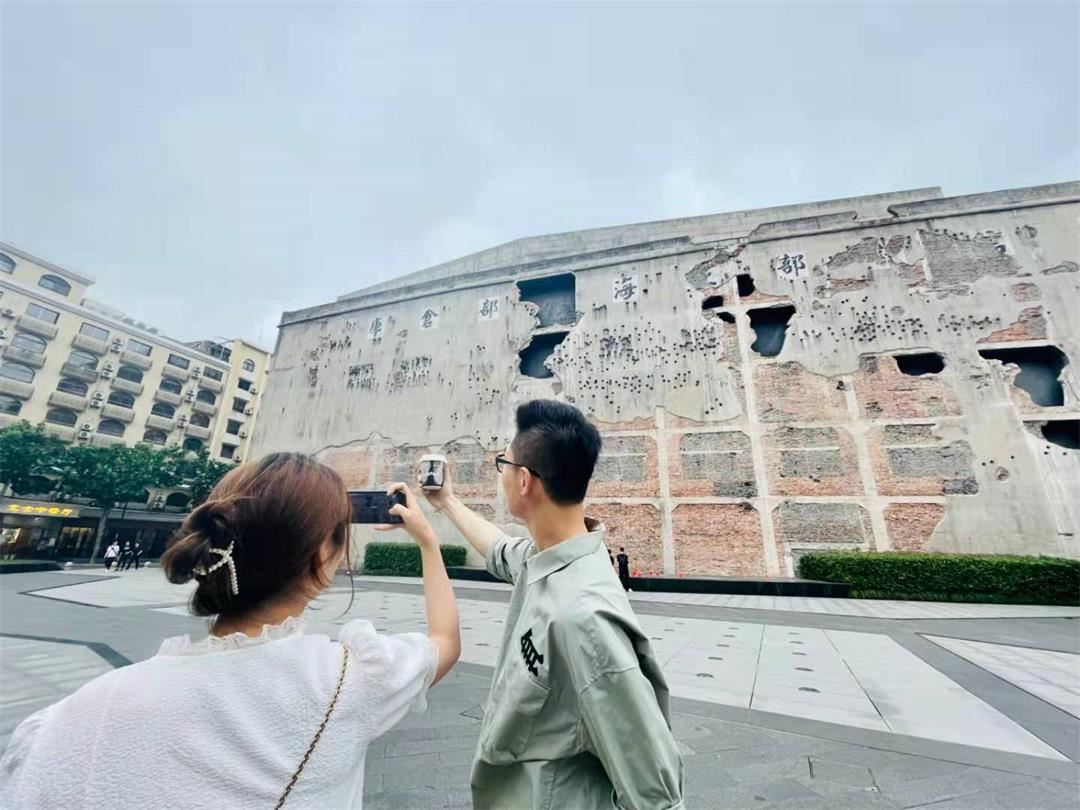
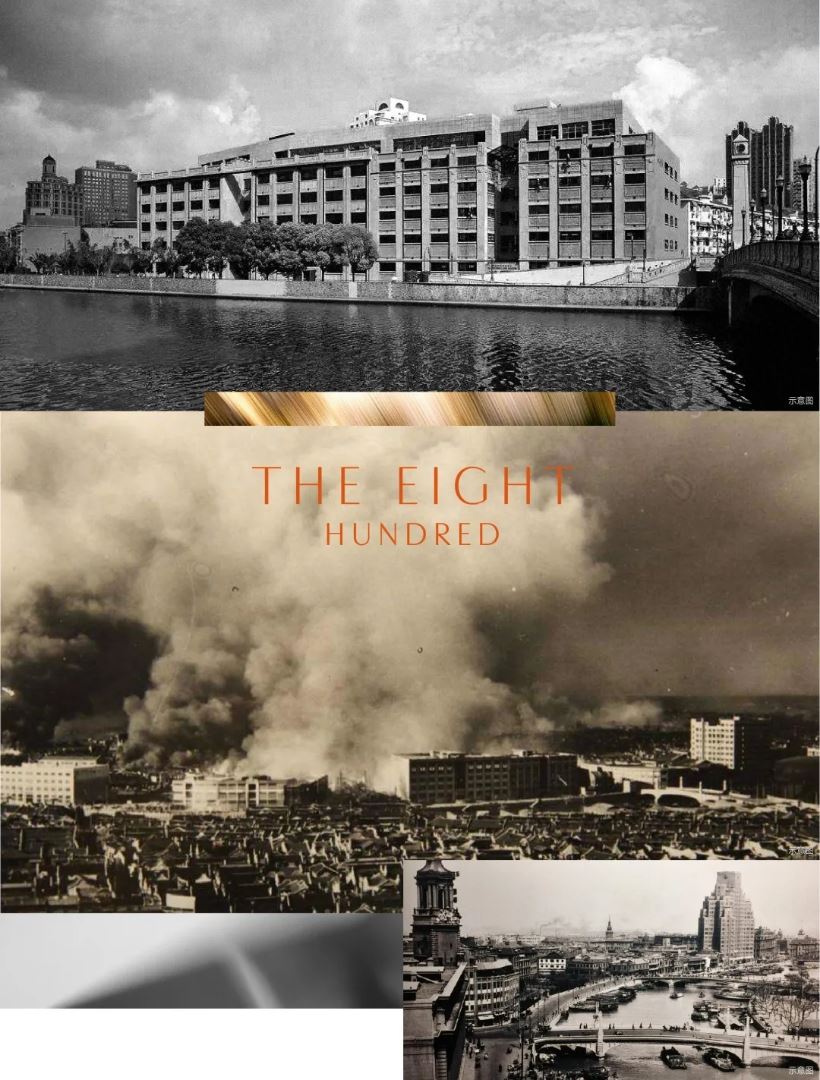
作为当时大陆银行和北四行(金城银行、中南银行、大陆银行及盐业银行)四家银行的联合仓库,钢筋水泥砌成,厚墙楼高的坚固楼体,成为天然的巨型堡垒。而谁都没有想到,为仓储功能而建造的建筑将成为“中国最后一道防线”,“八百壮士死守四行仓库”的事迹,让四行仓库用这种方式在全世界的报纸上登载。
Also known as the Joint Trust Warehouse, this building is known for its historic role in the War of Resistance Against Japanese Aggression (1931-1945). During the war in 1937, this was where around 400 Chinese soldiers, known as the Eight Hundred Heroes, waged a fierce battle against Japanese invaders. Part of the building has since 2015 served as a memorial for the battle. One section of its walls has been restored to look like it has been damaged by bullets and bombs.
On October 26, 1937, Lieutenant Colonel Xie Jinyuan was ordered to lead his battalion of more than 420 officers and men to fall back to the warehouse to buy time for the full retreat of the army and to win international support by showing China’s determination to fight against Japanese invaders.
Xie falsely claimed he had 800 men, seeking to confuse and frighten the enemy. That’s why the defense force came to be called “The Eight Hundred.”
The name “Sihang” means four banks, which comes from the fact that the building was co-financed by four banks. Once a furniture warehouse and office, it was turned into Sihang Warehouse Battle Memorial Museum in 2015.
The memorial provides a detailed insight into the battle, with photographs, maps, recollections, miniatures and life-sized wax models showing what life was like for those defending Shanghai.

在电视剧 何以笙箫默》《蜗居》《三十而已》《我的前半生》、《上海女子图鉴》C位出镜的一座美式现代派风格建筑获得了全网的关注,被誉为“远东第一公寓”的河滨大楼,用低调奢适的空间,诠释了上海经典老公寓的海派美学。其实在被“翻红”之前,河滨大楼早在1935年竣工之时,就是上海滩上的网红住宅,独特的“S”平面形设计,更是沙逊洋行为当时赫赫有名地产大王沙逊专属定制。作为上海最早的“水景住宅”,河滨公寓广受沪上各界人士的追捧。早期为英美人以及西班牙人租用,1938年,沙逊同意将此地作为犹太难民的救助方舟,1945年后,则被美国哥伦比亚影片公司等全球影业机构设为办公地址。百年以来,它就像是一个小世界,用最为私密的空间,见证了上海的社会变迁。行走在河滨大楼里,许多建筑细节仍保留着原貌。特别是盘旋而上的楼梯,楼道长而宽敞,幽深无比令人惊叹。些许角落已斑驳脱落,更显时间的韵味。
由通和洋行督造的三段式古典主义风格建筑“上海总商会”,罗马凯旋门式的大气恢弘的拱楼,展示着当时上海总商会作为商业首脑的地位。届时,上海商业大亨朱葆三、沈联芳、虞洽卿曾先后担任总商会会长,集结了无数士绅、企业家在这里为振兴国家工商业,弘扬“中国制造”付出了艰苦卓绝的努力。

建造于1920年的新泰仓库,是由当时以经营“挂名道契”为特色的著名英商泰利洋行设计并经租。沿着苏州河边,4家租赁仓库所(瑞祥仓库、鼎和堆栈、和记源仓库、怡丰铁栈)组成一座大体量的中西混合式建筑。钢筋水泥构成的极富功能性的结构,以便于搬运货物。在此昧旦晨兴的劳动者,庞大体量的大宗原材料及设备的来往,见证了20世纪二三十年代“远东最大贸易中心”的繁荣。而这座仓库背后的主人,则是上海滩鼎鼎有名的“颜料大王”贝润生。16岁时来到上海瑞康颜料行当学徒,跟与当时上海滩商业巨擘虞洽卿为师兄弟。时代的催生下,商业洞察力,各自成为中国民族商业历史上的一代枭雄。
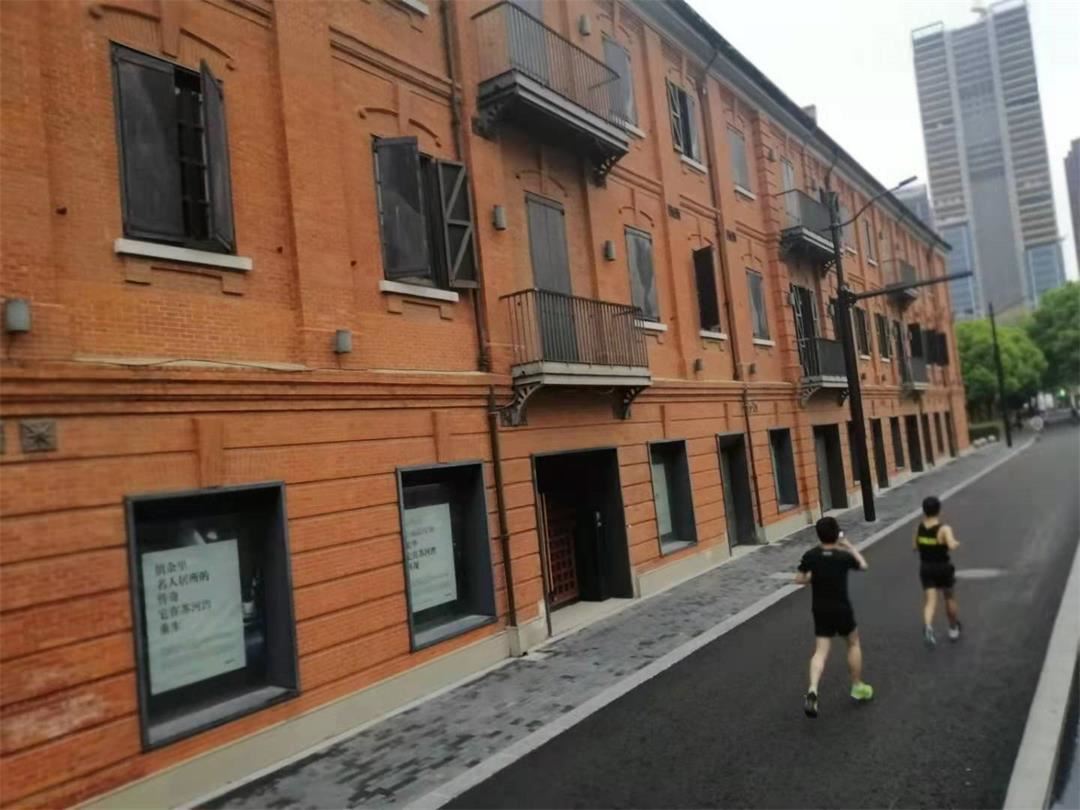
上海邮政总局大楼:带我们回到车马很远、书信很慢的年代
从苏州河水缓缓流过的四川路桥上向北望,看到的第一幢建筑就是上海邮政总局大楼。它不仅见证了百年邮政业的历史沧桑,更是中国目前仍在使用的规模最大的邮政大楼。今天我们一起回到车马很远、书信很慢的年代,来阅读这座大楼昔日的故事. 大楼内设有国内首家邮政博物馆——上海邮政博物馆,拥有百年历史的欧洲折衷主义建筑“上海邮政大楼”,1924年初建时,英籍建筑师思九生将西方美学与文化注入建筑,在邮局钟楼的两侧建造了两组雕塑,钟楼两侧各有一组三人组成的群雕。一组是每人各执交通工具和通讯电缆模型,象征铁路、海运及邮电通信等交通通信事业的发展。另一组居中者为罗马神话中的商神墨丘利(Mercury),在神话中是上帝的信使,体现邮政通信。其左右两侧是爱神,寓意邮政通信为人们沟通情愫。百年以来,他们便岿然不动地为城市传递着爱与沟通的力量。如今,曾经的远东第一厅已然化身上海邮政博物馆,趁周末闲暇时光,沿苏河漫步前往,尽情参展风靡沪上的打卡胜地。回到20世纪初,「大清邮政沪局」马车、1917年的第一辆邮运汽车…一辆接着一辆地驶入这栋拥有雄伟科斯林巨柱式列柱、巴洛克式穹顶的巨型建筑。昼夜不停的信使将来自五湖四海、世界各地的信件归拢分拣,24小时灯火通明的玻璃幕墙,映射出「远东第一厅」的辉煌史记。
The Shanghai Post Office Museum is a large landmark building that was built in 1924 with an interesting mix of European styles of architecture. It is now a historical landmark under protection as the Shanghai Postal Museum. At the time before mass communication and international phone service, mail delivery was the main method that people communicated internationally. Shanghai needed a new post office building in the early 1920s, and a Western architectural firm designed a huge building for the time in European Classical and Baroque styles. It is a strange eclectic mix with three-story Corinthian columns and big statues of Greek gods. There is Hermes the messenger god, Eros the god of love and Aphrodite the goddess of love. Along with them is an anachronistic Baroque clock tower. The building has built of steel and concrete, and it is an interesting reminder of the time when Shanghai had a big international settlement.

![]()
由英国著名设计师Mr. Bright Fraser设计的上海大厦,1934年为英商所建,至今已有近80年历史,上海大厦原名百老汇大厦,由于位于百老汇路顶端而得名(今大名路,1943年 10月10日改现名),它坐落于外白渡桥旁,外滩金融街、南京路商业街近在咫尺。它褐色泰山面砖覆面,整个装修风格选用了当时最为盛行的艺术装饰主义,曾经是外滩最高建筑之一,其主楼至今仍为外滩11栋近代历史文物保护之一;它最早是作为酒店式公寓使用,1937年8月淞沪会战爆发,上海大厦被日军占用,1945年国民政府接管了上海大厦用来作为励志社第七招待所,直到1951年百老汇大厦才正式改名为上海大厦,到了上世纪80年代,上海大厦成为对外开放的宾馆,然后一路发展为如今的五星级豪华酒店;它接待过近百位国家和政府元首,见证十里洋行半个多世纪的历史变迁。它曾经拥有上海最高的餐厅、最早的楼内停车场、是上海的地标建筑。它的地理位置独一无二,非常好,它地处苏州河与黄浦江“江河交汇”,是能将外滩风光和浦东秀色一收眼底的绝好方位。大厦的外形呈平面形状为两端开叉的 “一”字型(>-<状),巧妙地解决了四翼房间的朝向和采光问题,每一间朝南的房间都能看到外滩风貌,17-19楼宴会厅更是俯瞰浦江两岸的最佳场所,曾有多位国家领导人在18楼登高台伫立眺望上海美景。入夜,外滩和浦东陆家嘴地区的绚丽夜景尽收眼底。因此上海大厦也因此曾被称为 “浦江最佳观览”。

Designed by Mr. Bright Fraser, one of the architecture icons in UK, and built by British merchants in 1934, the Broadway Mansions Hotel Shanghai represents a history of nearly 80 years. Formerly named as “Broadway Mansions”, for it was located at the end of Broadway Road (renamed Daming Road on October 10th, 1943), broadway mansions bund is situated beside the Waibaidu Bridge, close to the financial district of the Bund and the commercial district of Nanjing Road. Covered by brown Taishan tiles and in the Art Deco style popular at that time, the bund hotel shanghai was a service apartment and the highest structure across the Bund at the beginning, and today, the main building is still one of the 11 modern historical sites in the area. When the Songhu Battle broke out in August 1937, the building was occupied by the Japanese army. In 1945, the ROC government took over the building and turned it into No.7 Rest House of Lizhishe, until it was officially renamed in 1954. In 1980s, the Broadway Mansions Hotel Shanghai became an international hotel and evolved into a 5-star luxury hotel over time. Having welcomed nearly 100 state and government leaders and witnessed the history of Shanghai for more than 50 years, this city hotel shanghai featured the highest restaurant and the first indoor garage in Shanghai, considered one of the landmarks in the Bund area.
Beyond its historical and cultural roles, the hotel is also committed to quality services. One of the best honors in the hospitality industry, Golden Key recognizes our premium services, which motivates our improvement and innovation. After several rounds of renaming and renovation, at present, the Broadway Mansions Hotel Shanghai is more dignified and oriental. 253 rooms and suites continue its glory of nearly 80 years, including a few rooms that used to be occupied by personages, all featuring a neat space and cozy environment. Thanks to its classical style and complete amenities, this 5 star hotels shanghai offers comfortable and private spaces to business travelers and tourists, integrating its original architecture with contemporary aesthetics.
The location is another highlight. Situated at the conjunction of the Suzhou River and Huangpu River next to shanghai the bund, it overlooks the Bund and Pudong. In a “>-<” shape, the master plan smartly solves the orientation and lighting concerns for all four wings and you can appreciate the view of the Bund in every south-oriented room. The Banquet Hall on 17-19F is the ideal venue to overlook both banks of the Huangpu River and many government leaders have enjoyed the city skyline on 18F. At night, shanghai hotel shanghai also presents the splendid night view of this glorious city, covering both the Bund and Lujiazui. Thus, the Broadway Mansions Hotel Shanghai is also considered one of the “best viewing spots over the Huangpu River”.
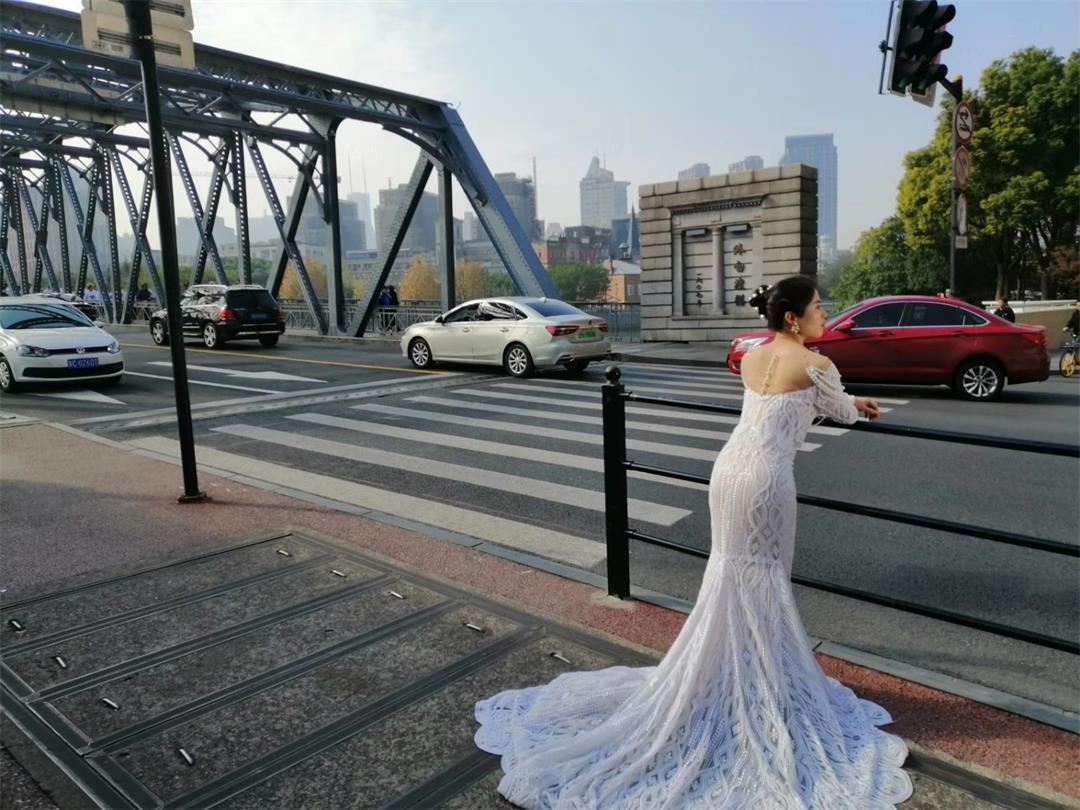


上海外白渡桥(Garden Bridge of Shanghai)是位于中国上海市区苏州河汇入黄浦江口附近的一座铁桥,是中国第一座全钢结构铆接的桥梁,也是当今中国唯一留存的不等高桁架结构式桥,同时也是自1856年以来在苏州河河口附近同样位置落成的第四座桥梁。1994年2月15日,上海市人民政府将外白渡桥列为优秀历史保护建筑之一The Waibaidu Bridge, also known as the Garden Bridge, is located at the confluence of Suzhou Creek and the Huangpu River. Built in 1908, the camelback all-steel bridge was the first of its kind at the time, and has since appeared in numerous postcards and movies, featuring Broadway Mansions on one side, the Bund on the other and the skyscrapers of the Lujiazui Financial Area in the background. It is regarded as a landmark in Shanghai.
Disclaimer:
Each person who participates accepts responsibility for making their own determinations and for their own safety, conduct and well being; recognizes that possible attend outdoor activities and agrees to participate solely at their own risk. The organizer of this city walk shall not be held liable for any inconvenience, accidents, rescues, injuries etc.
免责声明:
本活动本着非盈利、自愿参与的原则,参加活动者视为具有完全民事行为能力的人(18岁以上公民),并且保证自己身体情况允许参加此项活动。对于因自己身体健康和精神原因造成的运动损伤和其他情况完全负责,活动主办方不承担任何责任。
活动标签
最近参与
报名须知
1、本活动具体服务及内容由主办方【遇见城市部落CW】提供,活动行仅提供票务技术支持,请仔细阅读活动内容后参与。
2、如在活动参与过程中遇到问题或纠纷,双方应友好协商沟通,也可联络活动行进行协助。






 遇见城市部落CW
遇见城市部落CW


